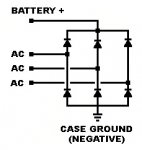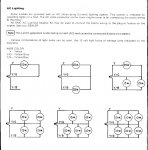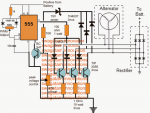Hi. I've recently got my hands on a Evinrude 15 hp from 1988. (Actually it is a 9.9 hp with the limiter-plate removed but thats another story).
Now I want to put my GPS and sonar into the boat and I'll need a battery for it. My questions is how does the AC lightning socket work? I now it's AC,
but what voltage can I expect? Can I just put a rectifier on it to convert to DC and then connect it directly to 12 V battery to charge it?
Can the rectifier consist by just 4 simple diods like this?

Now I want to put my GPS and sonar into the boat and I'll need a battery for it. My questions is how does the AC lightning socket work? I now it's AC,
but what voltage can I expect? Can I just put a rectifier on it to convert to DC and then connect it directly to 12 V battery to charge it?
Can the rectifier consist by just 4 simple diods like this?
























